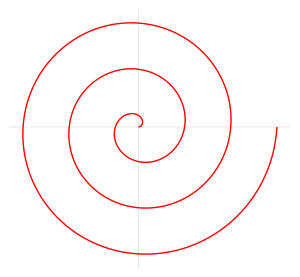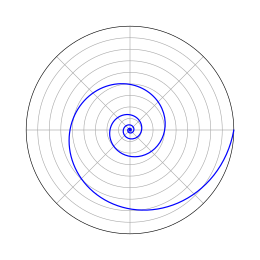This picture has been an APOD before, which is certainly fine since Sunday is repeat day. The picture itself is so remarkable that it really deserves to be the APOD more than once.
I googled "LL Pegasi" and got the coordinates of the amazing spiral, 23 19 12.607 +17 11 33.13. That way I could use my software Guide to look it up, really only to try to find out what kind of star is seen next to it in the picture. If I got the coordinates right - and I was only able to fill in 23 19 13 and +17 11 33 - then the star is a tiny little 12th magnitude thing whose designation is given by Guide as 3UC215-331878.
The only color information on the star provided by Guide is that its J-K index is 0.54. To the best of my shaky understanding, this makes 3UC215-331878 a somewhat but not tremendously red star, perhaps one of those K0III stars which are a dime a dozen. If 3UC215-331878 is a K0III star, then its true luminosity may be anything from, oh, 30 times the Sun in visual light to perhaps 300 times the Sun. On the other hand, 3UC215-331878 might also be a main sequence K0V star, in which case it is at best half as bright as the Sun and much closer to us than if it is an evolved giant. Whatever!

In any case, if that brilliant star in the picture is only 12th magnitude, then we can only begin to imagine how faint the amazing spiral is.
What I find very strange and completely remarkable is that the center of the spiral, which ought to be the power source of this amazing pinwheel, is dark, unlike the glowing spiral. Moreover, since today's APOD is a near infrared image, the central source should show up even if it was somewhat shrouded in dust.
Is it possible that the source could be too hot to show up much in a near-infrared image? Perhaps if the central source is a white dwarf (or a binary pair of white dwarfs)?
If you check out the white dwarf spectrum at left, you can see that it peaks in the far ultraviolet. 1000 Å (or 100 nm) is the far ultraviolet part of the spectrum, and 3000 Å is, unless I'm wrong, the near ultraviolet part of it. 3000 Å is
not even visible as dark purple to most people, and it is
very far from the infrared part of the spectrum. So if there is a white dwarf (or a binary white dwarf) at the center of the spiral, and if the harsh ultraviolet light from them has blasted the nearby dust particles to smithereens, then maybe there
is a luminous source at the center which, however, is too hot to show up in this picture.
Is that possible?
Or is it more likely that the central source is
so heavily shrouded in dust that it looks dark even at near infrared wavelengths?
Ann
 The Extraordinary Spiral in LL Pegasi
The Extraordinary Spiral in LL Pegasi



